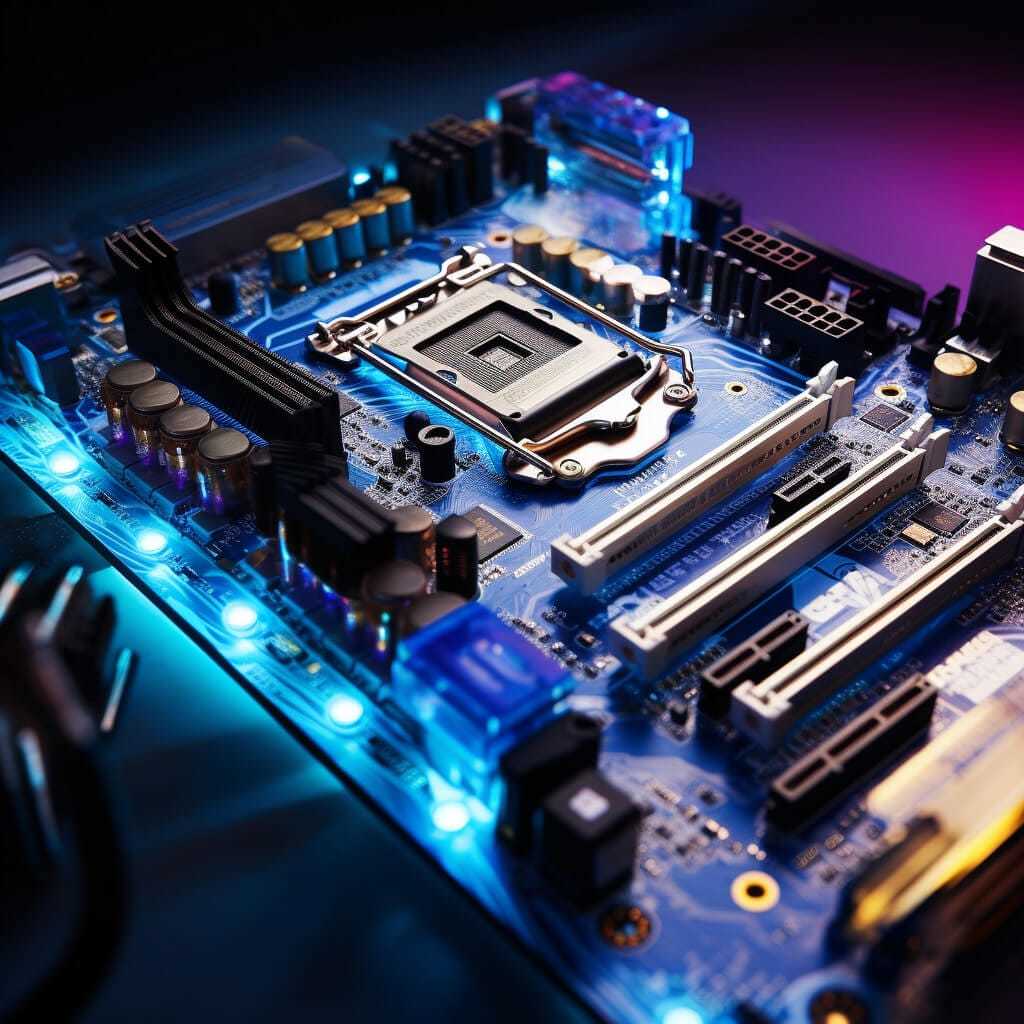In the ever-evolving realm of PC motherboards, consumers often find themselves navigating through a maze of marketing terms that promise impressive features but may lack substance. This article aims to demystify some common marketing gimmicks prevalent in the motherboard landscape, providing a clear path for users to make informed choices without falling victim to unnecessary expenditures.
In an era where artificial intelligence is a buzzword, motherboard manufacturers have hopped on the bandwagon, integrating features labeled as “AI” into their BIOS. However, a closer look reveals that these features often amount to scripted automation rather than genuine AI-driven functionalities. Terms like “AI overclocking” and “AI cooling” may sound sophisticated, but they frequently fall short of delivering the complexity associated with true AI capabilities. Users should approach these features with a discerning eye, recognizing them as automated processes rather than groundbreaking advancements.
Protective overdrive: The proliferation of “protection” branding
The trend of labeling every component with various “Protection” tags, as seen with brands like Gigabyte, MSI, and ASUS TUF, has created a competitive environment in motherboard marketing. However, the excessive use of labels like “Ultra Durable” can be misleading, especially when applied to budget-friendly boards that lack noticeable durability enhancements. This branding supremacy sometimes overshadows the evaluation of critical performance aspects, directing consumer attention toward protection features rather than a comprehensive assessment of motherboard performance.
RGB lighting: Aesthetic pleasure or marketing gimmick?
While RGB lighting has become a popular aesthetic feature in PC builds, its deployment on mid-range and entry-level motherboards can be more of a marketing checkbox than a thoughtful design choice. Manufacturers, at times, prioritize the inclusion of RGB lighting without ensuring it contributes meaningfully to the overall aesthetics. Consumers are cautioned to look beyond the allure of RGB lighting and focus on substantive features, avoiding the pitfall of investing in motherboards solely for their lighting prowess.
VR ready or not: The misleading promise of virtual reality
The persistent use of “VR Ready” branding on motherboards, particularly in the mid and lower tiers, can mislead consumers into believing that the motherboard plays a pivotal role in a system’s virtual reality capabilities. In reality, VR readiness is more dependent on the processing power of the CPU and GPU than the motherboard itself. This ongoing branding perpetuates a misunderstanding, diverting attention from the genuine determinants of VR performance and potentially leading consumers to place undue importance on the motherboard’s role.
Gaming branding: Style over substance?
The prevalent use of “GAMING” branding on motherboards, often embedded in product names, may create a misleading narrative. While these motherboards may perform exceptionally well in gaming setups, they are not exclusive to such environments and can excel in various computing tasks. The emphasis on gaming branding, including the “GAMING Certified” stamp, may overshadow the versatility of these motherboards, potentially misleading consumers into thinking they need a dedicated gaming motherboard when the distinctions are more about marketing than meaningful performance differences.
Overclocking claims: Sorting through the noise
The claim of being “Overclocking Ready” is a common feature flaunted by motherboard manufacturers, sometimes irrespective of the actual capabilities of the chipset and power delivery system. Brands like MSI and Gigabyte intertwine these claims with the allure of AI-driven overclocking capabilities, creating a nuanced reality. While some chipsets restrict overclocking, the branding aims to exaggerate the capabilities of the board, overshadowing practical implications and potentially misleading consumers.
Focusing on what matters: A guide for informed choices
Navigating the complex landscape of motherboard selection requires cutting through the marketing noise. Instead of getting swayed by flashy labels, consumers should concentrate on core elements that genuinely impact performance. Socket and chipset compatibility, a robust VRM and power delivery, effective cooling solutions, M.2 slots for storage, ample USB ports and rear connectivity, high-quality onboard audio, and reliable networking capabilities are the bedrock of a motherboard’s functionality. By sidestepping gimmicks and focusing on these essential features, consumers can make astute decisions, ensuring their motherboard investment aligns seamlessly with their actual computing needs.
The motherboard market may be rife with marketing gimmicks, but armed with knowledge and a focus on essential features, consumers can navigate this landscape with confidence. Making informed choices ensures that users invest in motherboards that truly meet their computing needs, free from the allure of flashy labels and misleading branding.





